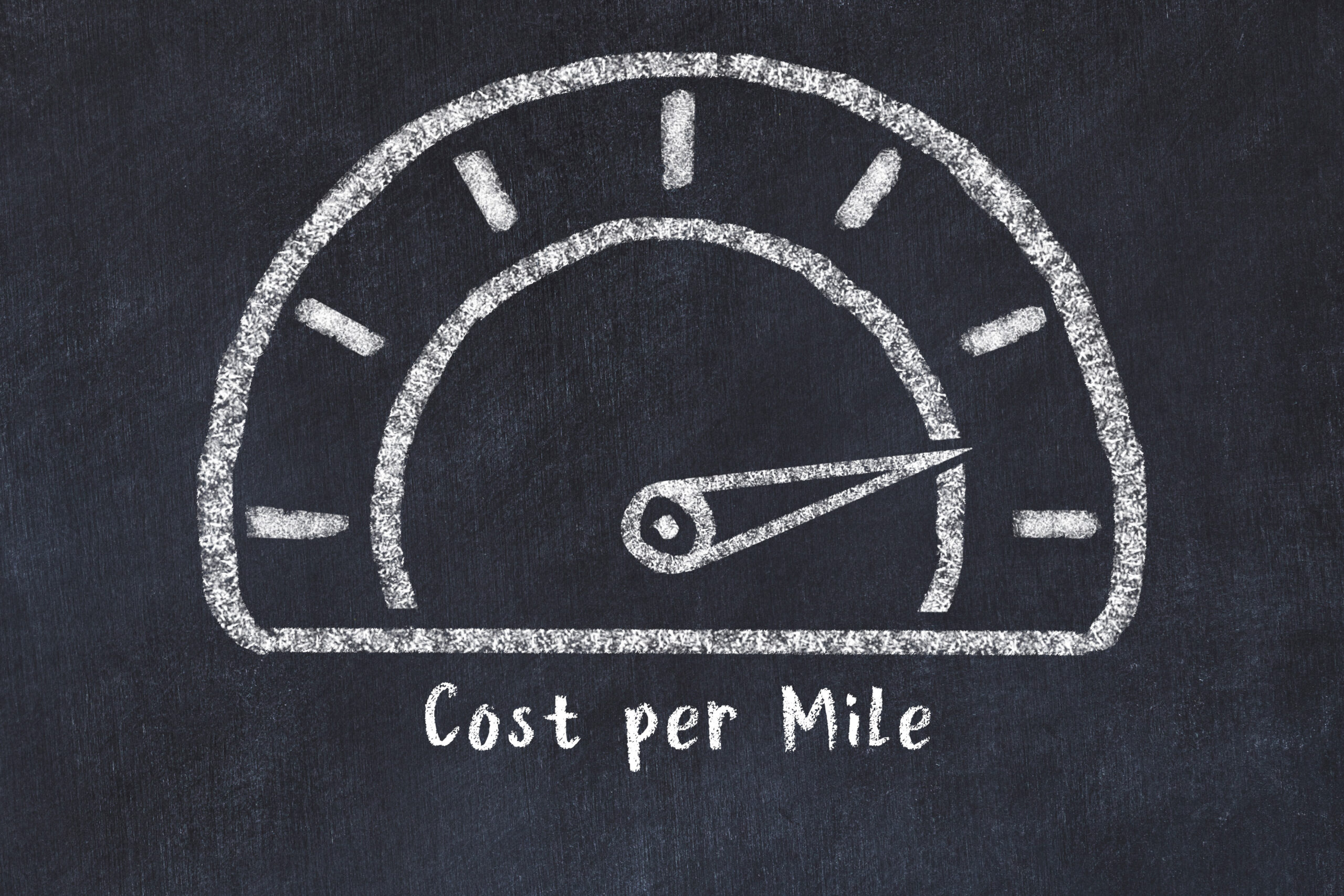
If you run a trucking fleet, there is one important metric that can have a great impact on your bottom line. The average trucking cost per mile reflects your operation efficiency, and keeping it under control is essential.
With trucking costs at the highest in the 15-year history of ATRI’s Ops, controlling what you can is crucial. You might not be able to prevent a road closure that adds more miles or stop the increase in fuel prices, but there is one thing you can do to reduce your average trucking cost per mile. And it begins with aerodynamics.
In the post, we’ll define the average trucking cost per mile, learn how to calculate it, and discover our aerodynamic strategies to help reduce your average trucking cost per mile and start increasing profits.
What Is the Average Trucking Cost per Mile?
In the trucking industry, the cost per mile refers to the financial cost of driving a truck a single mile.
Knowing this metric can give fleet owners and managers an advantage. Land Line reported that those who knew their operations costs benefited from $1.15 per mile and $1500 more per trip.
Knowing their average trucking cost per mile helped these companies make more data-driven decisions, such as which routes, customers, and trip types are more profitable, and implementing new strategies to help reduce operational expenses.
Calculating Trucking Cost per Mile
You can calculate the trucking cost per mile with the following formula:
Trucking cost per mile = total costs (expenses) / total number of traveled miles
To find your total costs, you’ll need to combine several cost components. These components include general business expenses like rentals and utilities and administrative costs like accounting, taxes, and salaries. You should also include trucking expenses such as fuel, repairs, tolls, and insurance.
The total number of traveled miles is the entire distance a truck has traveled in a specific timeframe, usually a year.
It can be painful to track expenses manually, especially if your trucks operate hundreds or thousands of miles away. With the development of technology and tools, collecting data and performing analysis much easier, providing detailed information to improve your operation’s efficiencies.
What Role Does Aerodynamics Play in Cost per Mile?
Making your trucks more aerodynamic can help reduce fuel waste. The more aerodynamic a truck is, the less energy it uses to move, which reduces the average cost per mile for trucking.
NACFE found that improved aerodynamics in commercial tractors is one of the biggest contributors to reduced fleet operating costs. The efficient use of energy also helps reduce harmful emissions.
You can improve the aerodynamics of the tractor with items such as tractor-trailer gap devices, chassis fairings, and wheel covers. Using a tractor-gap device helps close the gap between the tractor and the trailer to improve aerodynamics and can help reduce fuel costs by up to 5%.
You can also use a combination of adding more aerodynamic parts, such as bumpers, mirror and cameras, and wheel covers, all of which helps to streamline the airflow and improve fuel efficiency. These changes can improve fuel efficiency, creating savings of up to 10%. Also, the less fuel the truck burns, the longer its engine will last.
4 Aerodynamic Strategies for Reducing Average Trucking Cost per Mile
Making aerodynamic improvements to trucks is one thing you can control. They are an investment that brings long-term savings. Here are four aerodynamic strategies to reduce the average cost per mile for trucking.
1. Try TruckWings
As per AFDC, reducing the drag or resistance of a vehicle when traveling at high speed lowers the engine’s load and improves fuel economy.
One way of helping to reduce drag is to close the gap between the cab and the trailer. TruckWings make this possible. Simply mount it to the cab, and when the truck travels over 52mph, it automatically deploys to close the gap and improve aerodynamics.
Ryder Systems implemented TruckWings in their fleet, saving their MPG by 3-6% with a 12-18 months ROI.
2. Optimize fuel efficiency
Because of the size and shape of a truck, the faster it travels, the more energy is required to push through air resistance. Implementing multiple devices can reduce the aerodynamic drag of a truck, lowering fuel consumption by more than 12%.
You should focus on the four main areas that create the most aerodynamic drag on the tractor-trailer:
- The front of the tractor
- The gap between the tractor and the trailer
- The under-body of the trailer
- The back of the trailer
3. Keep up with routine maintenance
Simple maintenance can help ensure your truck is aerodynamic by optimizing its performance and minimizing drag and sway. Make sure your trucks have the correct air pressure, the right motor oil levels, and change air filters when required.
Don’t forget the importance of accessories when performing maintenance. Damaged mud flaps and wheel covers can reduce the efforts of streamlining the airflow around the truck.
In addition, it’s important to ensure the roof fairing is in good condition. Roof fairings can improve fuel economy, resulting in $6,900 in savings annually.
4. Consider wide-base tires
This approach is less common, but you can reduce tire costs and improve aerodynamics simultaneously by using wide-base tires. Wide base tires help to reduce rolling resistance due to eliminating two side walls, and they are slimmer, reducing the surface area that makes contact with the road.
Optimize Aerodynamics and Improve Profitability With TruckLabs
Optimizing the aerodynamics of your trucking fleet can help reduce the average cost per mile for trucking. And in under two hours, TruckWings can help you to save 3-6% of fuel costs.
If you want to join five of the ten largest fleets in North America, enjoying improved fuel economy and less emissions, schedule a free consultation.



